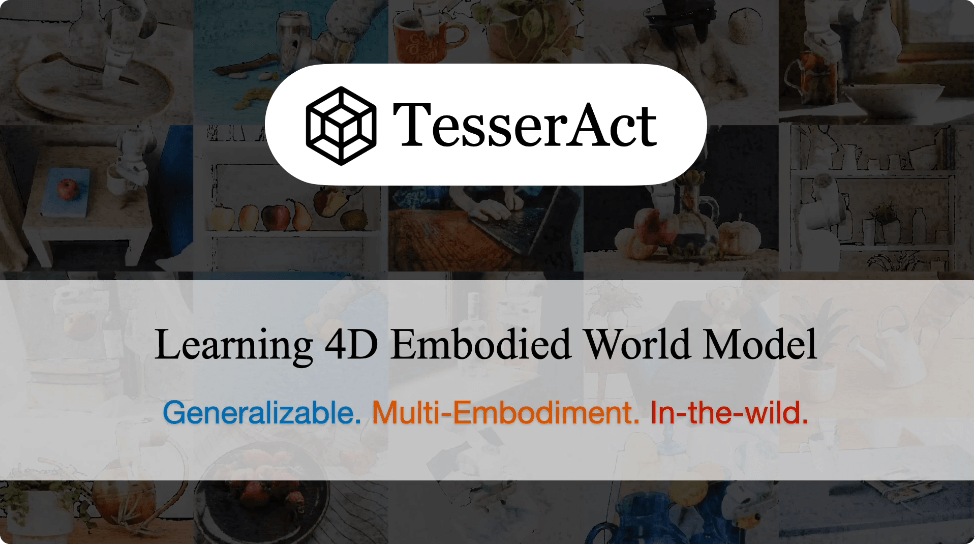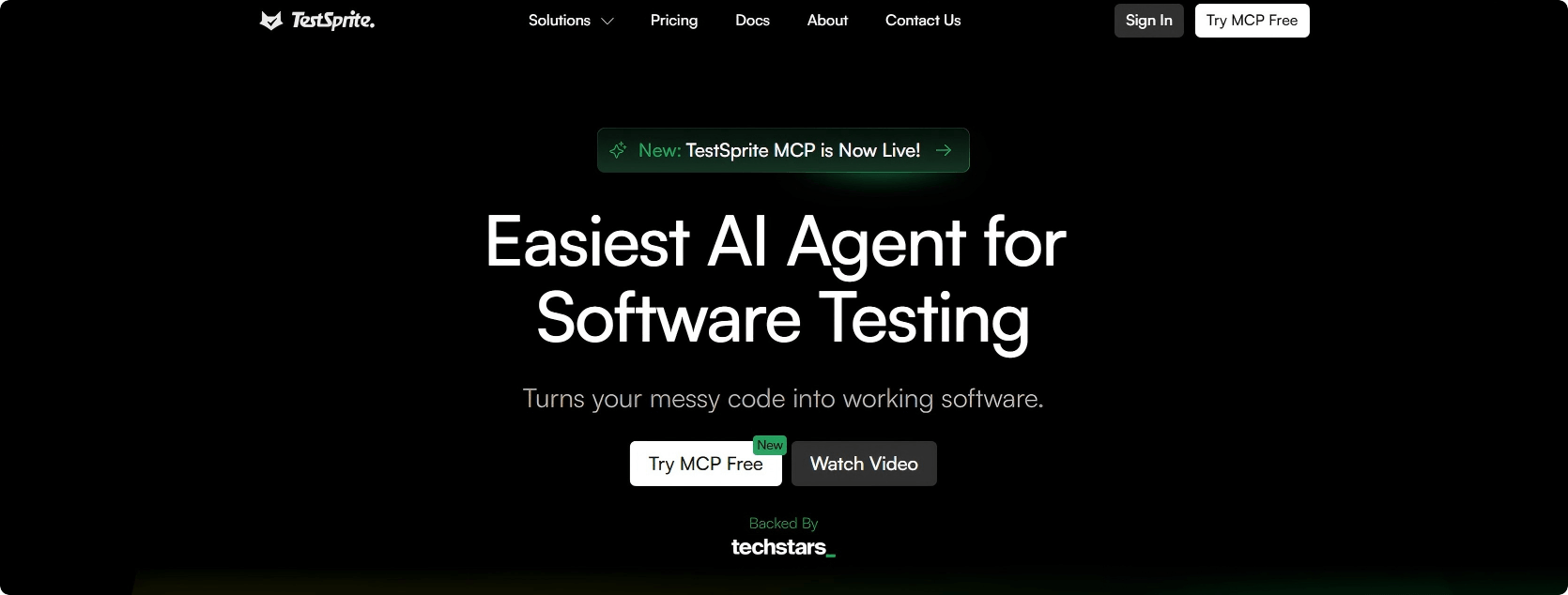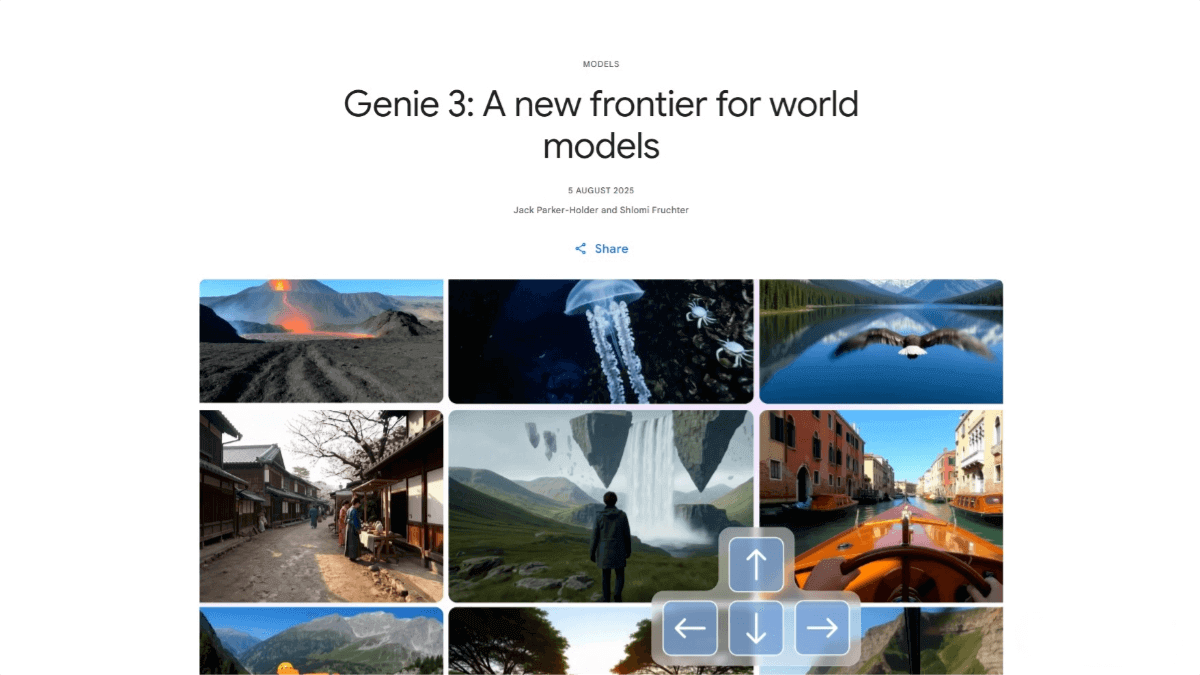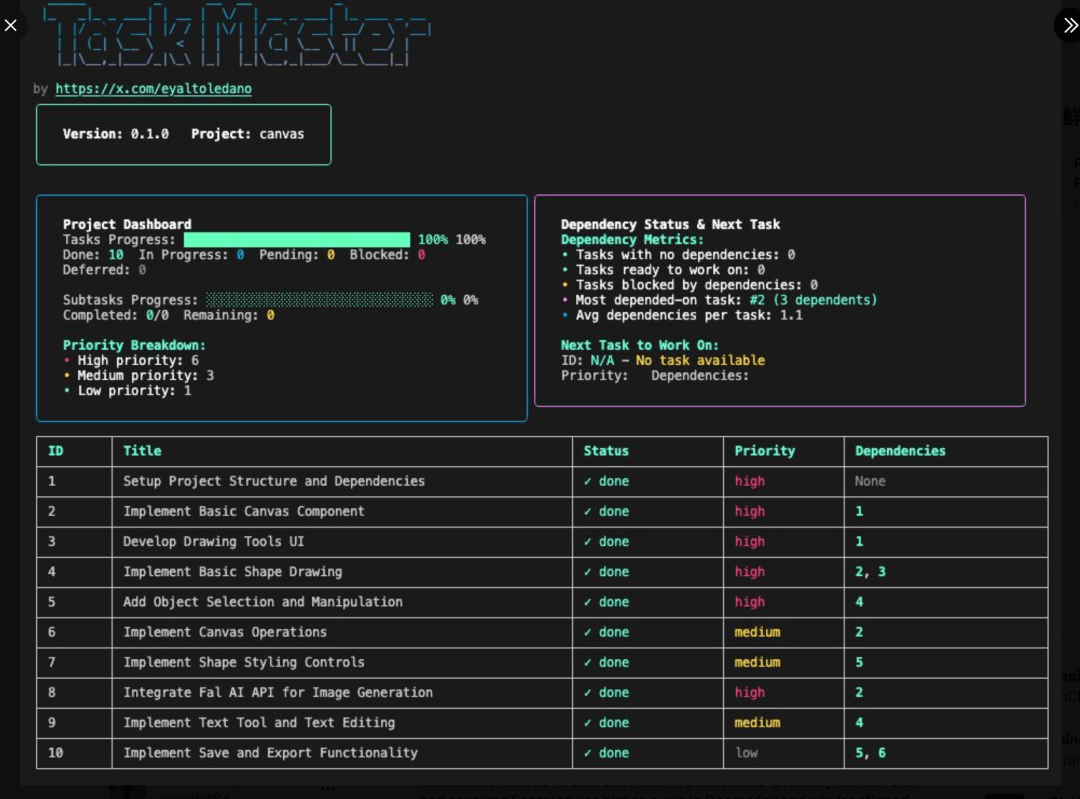TesserAct – An AI 4D Embodied World Model Capable of Predicting the Dynamic Evolution of 3D Scenes
What is TesserAct
TesserAct is an innovative 4D embodied world model capable of predicting the dynamic evolution of 3D scenes over time in response to the actions of embodied agents. It is trained using RGB-DN (RGB, Depth, and Normals) video data, going beyond traditional 2D models by incorporating detailed shape, configuration, and temporal changes into its predictions. One of TesserAct’s core strengths lies in its spatiotemporal consistency, which enables novel view synthesis and significantly enhances policy learning performance.

Key Features of TesserAct
-
4D Scene Generation:
TesserAct generates video streams that include RGB images, depth maps, and surface normal maps—together forming a coherent 4D scene. This helps AI systems better understand the shape, position, and movement of objects. -
Novel View Synthesis:
The model supports generating scene images from different viewpoints, which is highly beneficial for robotic navigation and manipulation in complex environments. -
Spatiotemporal Consistency Optimization:
By introducing spatiotemporal continuity constraints, TesserAct ensures that the generated 4D scenes remain highly consistent in both time and space, more closely reflecting the physical dynamics of the real world. -
Robotics Operation Support:
Robots powered by TesserAct perform exceptionally well in various manipulation tasks, especially those requiring precise spatial understanding. Success rates are significantly higher compared to systems relying solely on 2D images. -
Cross-Platform Generalization:
TesserAct demonstrates stable performance across different platforms and environments, adapting effectively to a wide range of complex scenarios.
Technical Principles of TesserAct
-
Dataset Expansion:
TesserAct begins by extending existing robot manipulation video datasets by adding depth and surface normal information. Pretrained models are used to extract these features, enriching the dataset with more diverse multimodal data. -
Fine-Tuning a Video Generation Model:
A video generation model is fine-tuned on the expanded dataset to jointly predict RGB, depth, and normals for each frame. This multimodal prediction ability enables the model to comprehensively understand scene geometry, configuration, and temporal changes. -
Scene Transformation Algorithm:
TesserAct introduces an algorithm that transforms the generated RGB, depth, and normal videos into high-quality 4D scenes. This ensures temporal and spatial coherence for downstream tasks like novel view synthesis and policy learning. -
Spatiotemporal Consistency Optimization:
By incorporating continuity constraints across time and space, TesserAct ensures the generated 4D scenes remain consistent, enabling more realistic modeling of physical dynamics and more accurate environment understanding for embodied agents. -
Inverse Dynamics Model Learning:
With high-quality 4D scene generation, TesserAct can learn the inverse dynamics models of embodied agents. This allows agents to more accurately predict the effects of their actions on the environment and perform better in complex tasks.
Project Links for TesserAct
-
Project Website: https://tesseractworld.github.io/
-
GitHub Repository: https://github.com/UMass-Embodied-AGI/TesserAct
-
HuggingFace Model Hub: https://huggingface.co/anyeZHY/tesseract
-
arXiv Technical Paper: https://arxiv.org/pdf/2504.20995
Application Scenarios for TesserAct
-
Robotic Manipulation Tasks:
TesserAct facilitates high-quality 4D scene generation, helping robots better understand and predict dynamic environmental changes. In tasks such as object grasping, classification, and placement, TesserAct provides accurate spatial information, significantly improving success rates. -
Virtual Environment Interaction:
With support for novel view synthesis and spatiotemporal consistency, TesserAct enables more realistic visual experiences in virtual or augmented reality (VR/AR) applications. -
Embodied AI Research:
TesserAct serves as a powerful tool for embodied AI research, helping researchers better understand how agents interact with their environments through perception and action. -
Industrial Automation:
In industrial settings, TesserAct helps robots execute tasks such as object recognition and manipulation in dynamic environments. Its spatiotemporal continuity optimization makes it well-suited for complex and changing workspaces.
Related Posts




